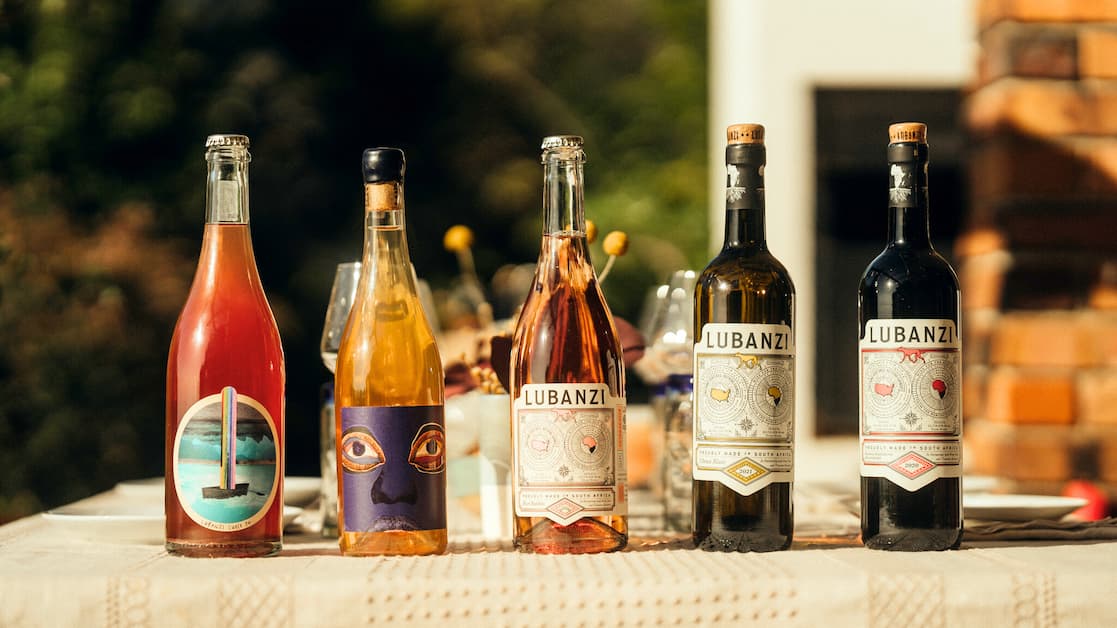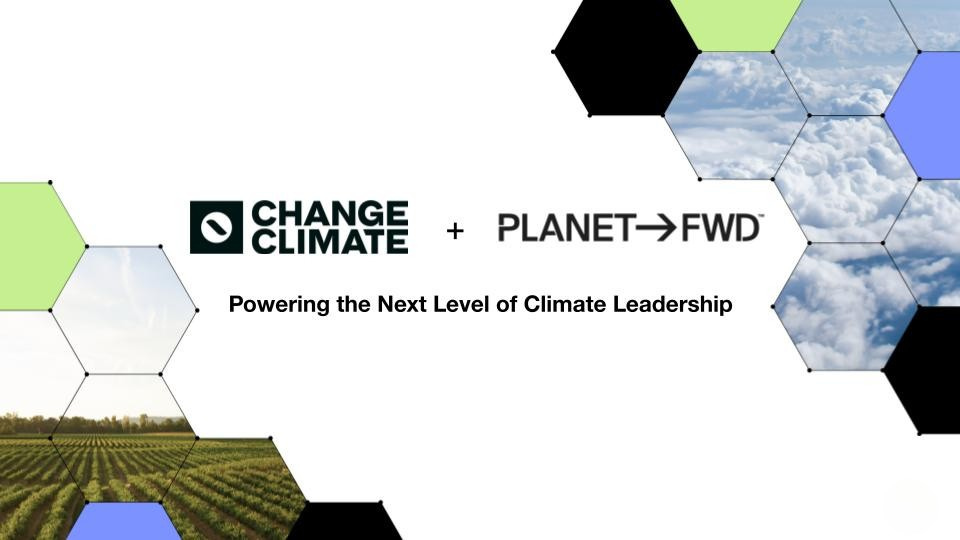
Blueland didn’t wait for the market to ask for refillable, plastic-free cleaning products—they built one from scratch. Since launching on Shark Tank in 2019, the company has taken a radical approach to rethinking household products – combining sleek design, smart science, and a big dose of climate urgency.
Today, the company has a passionate and loyal following. That’s because Blueland continues to push boundaries with innovative product design, bold climate leadership, and dedicated investments in decarbonization. I recently caught up with Co-Founder and President John Mascari to hear about Blueland’s climate evolution, the role of transparency and advocacy in driving progress, and how The Climate Label fits into their strategy.
Austin: If you had to give your Shark Tank pitch again today, would it be the same as it was in 2019?
John: Yes – and no.
From a sales lens, no. When we filmed Shark Tank, we had just launched the company with our spray cleaners and hand soap tablets. Today, we’ve expanded the product line significantly and there’s a much bigger focus on our dishwasher, laundry and toilet bowl products.
But yes, everything would still be grounded in sustainability, it’s in our DNA. The main difference would be that instead of emphasizing the problem, we’d be focusing on the solution.
In 2019, our pitch centered around the fact that plastic comes from petroleum, and how that’s problematic. These links are much better understood today, but in 2019 we really needed to explain. Education was a big hurdle at the get go, but the environmental community as a whole has made giant strides on plastic pollution awareness over the last few years.
Fast forward to today, and consumers know that microplastics are in their water, in their food, and in their bodies. We know that they’re bad for the planet and for our health – and we’re all looking for tangible ways to reduce our exposure.
AW: That’s so true, a few years ago no one had even heard the term “microplastics.” Can you tell me more about why consumer adoption has skyrocketed?
JM: If you don’t ask customers to compromise on performance, price, or convenience—and we don’t—they’re happy to switch to something that’s better for the planet. And that’s true across the board, not just for home cleaning products.
The way you use our laundry and dishwasher tablets is the exact same process that customers have been using for decades, but with single-dose plastic pods. There’s no behavioral change barrier. Pile on the fact that we’ve also made the cost of switching as low as possible, and adoption became relatively seamless.
AW: You have an impressive following of over 1 million passionate customers. How do you frame sustainability and climate issues with them?
JM: Plastic pollution is still core to our messaging – it aligns with the surge in awareness about microplastics. Take our dishwasher tablet, for example – it's naked, as opposed to everything else on the market that’s wrapped in a petroleum based plastic film called Polyvinyl Alcohol (aka PVA). That film doesn’t fully dissolve—so it can leave plastic residue on your dishes. That film also goes down your drains and ends up back into the environment where it’s binding to other materials, becoming more toxic, and entering our food and water supply.
We’re also talking more these days about how plastic production is directly tied to carbon emissions. People are connecting those dots. Back to the dishwasher example, it's not just the petroleum-based wrapping around the pod that’s problematic. A lot of the ingredients used in the cleaning agents themselves are synthetic petroleum-based polymers that are exacerbating the climate crisis. This really resonates with our customers.
AW: In this complicated political landscape, a lot of companies are reevaluating how they talk about their climate goals and climate impact. How do you communicate about Blueland’s climate work, and how do you navigate shoppers’ increasing skepticism about environmental claims?
JM: Transparency is absolutely critical and it’s a core part of who we are as a company.
The good news is that our supply chain emissions are significantly lower than for other traditional cleaning products, because our products are dry – they’re lighter and smaller. But we can’t just say that, we have to show that. That’s why we just launched a new tool on our website that shows customers, through their individual profiles and order histories, how much plastic pollution and carbon emissions they’re avoiding by switching to Blueland.
The truth is that a lot of companies have tried and failed to share carbon data with customers – because the numbers often don’t mean anything to shoppers. That’s why we spent a lot of time talking to real people, running analytics and assessing consumer insights data to really understand what metrics are most important to our customers.
The result? Our customers want to know that their choices matter, so we’re showing them the power of their decisions. It’s been a dream of ours since the beginning to launch this tool, and the feedback thus far has been amazing.
AW: Congrats, that’s really exciting to hear and is no small undertaking! There are so many companies out there staying silent on climate right now and refusing to be open about their environmental impact for fear of criticism. Yet, you’re doing the opposite. Why?
JM: We’re really proud of the work we do, so the bottom line is that we lean into it. If anything, we feel like we don’t share enough.
Our view is progress, not perfection. We’re not claiming to be flawless. But we are committed, and open about the wins as well as the setbacks – and openness builds trust. From a packaging standpoint, the job won’t be done until we have no packaging at all. The bar could never be high enough, and being transparent about that fact is crucial for community building, accountability and continued improvement.
That’s also one of the things we love about The Climate Label—it’s all public. We disclose our emissions and our reduction goals, adopt an internal carbon fee, then create a climate transition budget. You work with us, audit us and then share the data on your site. The highest degree of transparency and accountability in your certification pushes us to do better and invites consumers into the journey with us.
AW: On that note – and as you know – we made a huge shift last year. We retired the Climate Neutral Certified mark, which evolved into The Climate Label. The key differentiator is that our new certification uses a dollar-based accountability model. How did this shift impact your strategy?
JM: To shift the needle on climate change, we need solutions. And to develop and implement those solutions, we need widespread and unprecedented levels of investment. So, first and foremost, we love that the new certification is filling a critical gap in the marketplace and catalyzing funding.
For Blueland, The Climate Label helped us think more ambitiously and also engage our vendors on a whole new level. For example, we’d been pushing our co-manufacturer to adopt 100% renewable energy and start installing solar. Now, with this cost-per-ton framework, we can justify those investments internally. The new mechanism unlocks the budget needed to help facilitate decarbonization initiatives with our key suppliers that weren’t previously possible. That’s a game-changer.
AW: Thanks for sharing that! One of the most frequent questions we get from companies considering certification is, “How can we afford this?” Having gone through the process, what’s your advice to them?
JM: It’s critical to remember that doing right by the planet means improving efficiency and increasing margins.
Most businesses try to fit sustainability into existing supply chains, but we built our supply chain from scratch to prioritize the planet. That meant upfront challenges—new equipment, new formats—but we ended up with a very efficient model. When you strip water out of cleaning products and avoid bulky plastic packaging, you dramatically reduce shipping costs and emissions. For example, our spray cleaner refills are as much as 93% smaller than their conventional equivalents which drastically cuts down on carbon emissions in our supply chain. With our Glass + Mirror spray cleaner refill, Blueland can ship the equivalent of 34,560 19oz bottles of Glass + Mirror cleaner on one pallet whereas a traditional bottle cleaner would require approximately 34 pallets, which is more than an entire truckload, to ship the same.
Even when policies are changing on a daily basis, climate investments drive clear benefits: lower costs, better margins and bigger dividends. We’ve made climate a part of our company culture, which means we’ll continue to operate efficiently – even in a changing regulatory landscape.
AW: I couldn’t agree more. And speaking of the changing regulatory landscape, there are a lot of roadblocks at the moment. Do you have any good news to share, a dose of inspiration for our readers?
JM: Yes! There are actually some exciting wins to share. Just recently, the UK banned a product because of the company’s greenwashing-laden claims about its use of PVA film. Now, that product is coming off of shelves – which means retailers are paying more attention than ever to whether products contain PVA. This one ban could lead to transformative changes across global supply chains. That’s exciting stuff!
There’s also a bill in the works in New York City to ban the use of PVA in dishwasher and laundry detergent. That would be another exciting leap forward for the planet.
AW: Love it, and great news for the planet indeed. I’m inspired for sure, especially after hearing more about Blueland’s climate leadership. Sometimes when one business moves an inch on climate, the whole supply chain moves a mile.
JM: Thanks, Austin. The hard truth is that there’s no silver bullet when it comes to climate. But grit, creativity and persistence pay off. Embedding climate into business models doesn’t just drive decarbonization and funding for solutions. It drives efficiency across the board, increases profits, builds resilience and inspires employees. That, in our book, is a no brainer.
Subscribe to the latest news and announcements from our team.
Austin Whitman is CEO and co-founder of The Change Climate Project. For more than two decades he has worked to create new markets and demand for climate solutions. He believes companies and individuals can make a huge difference for the climate if they're just shown how. Outside of work, he is a dad, a woodworker, and spends a lot of time in New England's great outdoors.

A conversation with Lubanzi Wines on weaving climate action into its DNA, leading with transparency and earning The Climate Label for long-term impact.

Brent Kawamura shares how REI is aligning climate ambition with action — leveraging brand partnerships, funding climate solutions and focusing on credible tools and certifications to accelerate and scale impact across its supply chain.

Planet FWD and the The Change Climate Project are teaming up to help brands transform climate ambition into measurable impact.
Sign up to receive the latest news and announcements from the Climate Neutral team.
Sign up to receive the latest news and announcements from the Climate Neutral team.